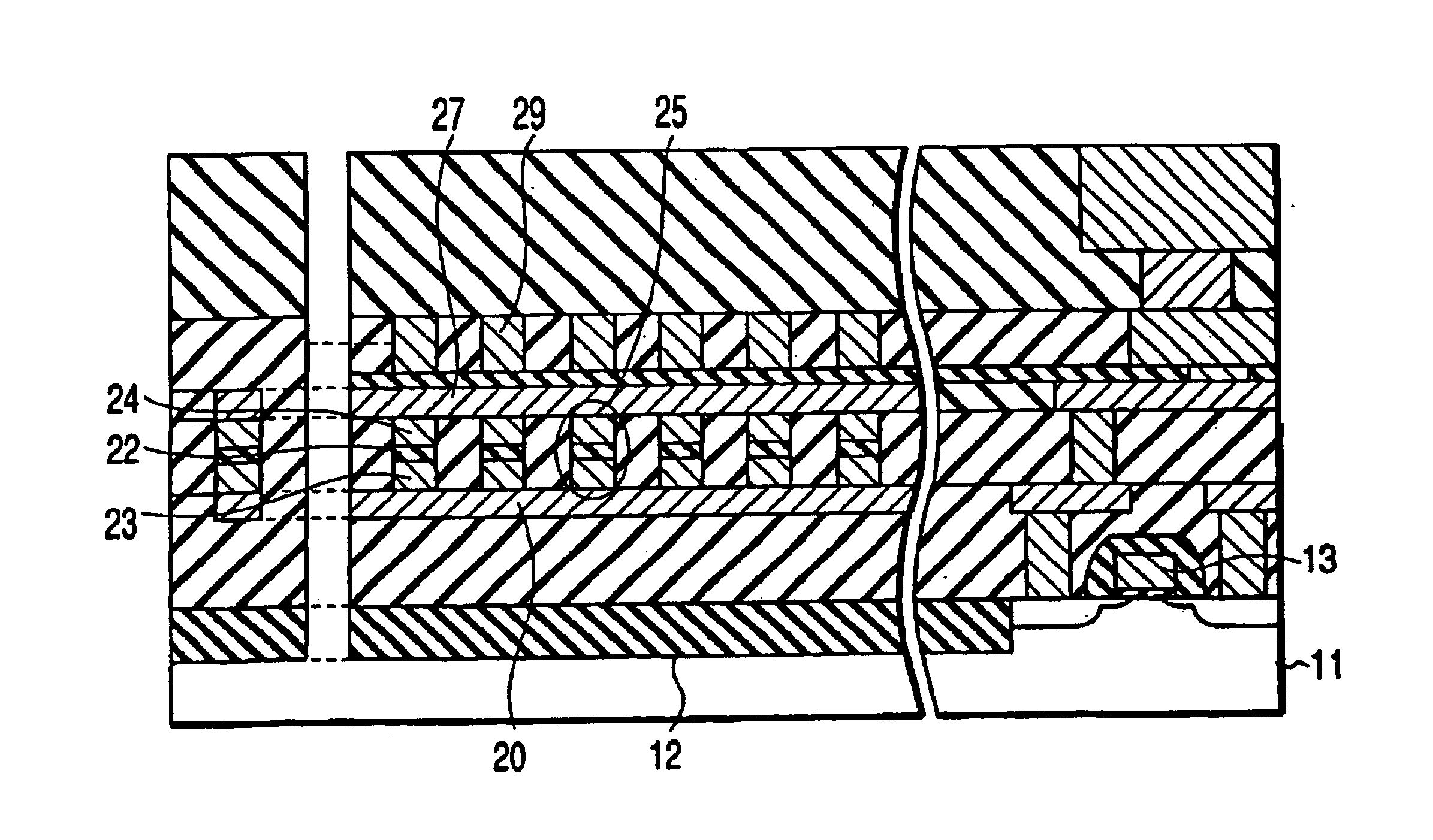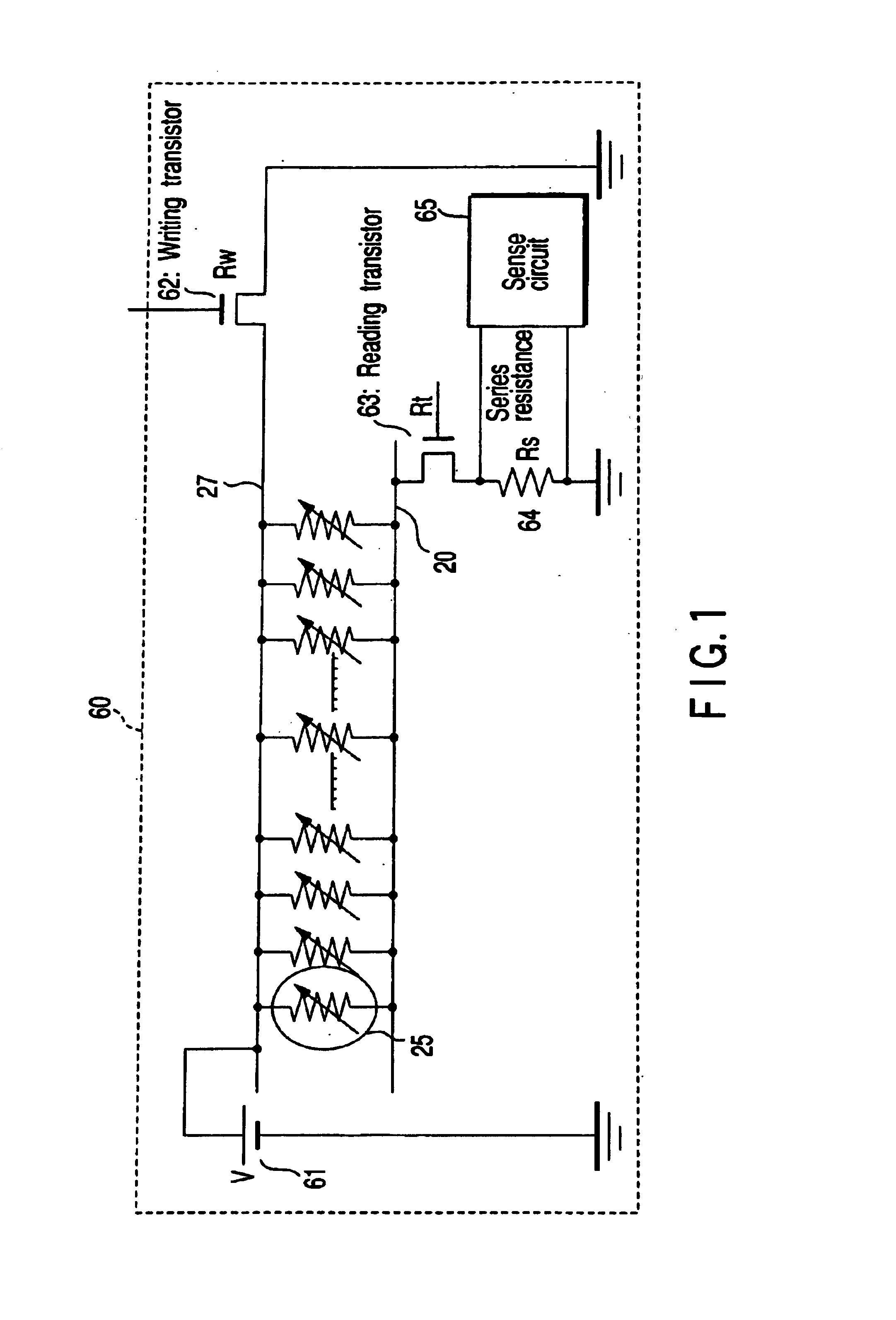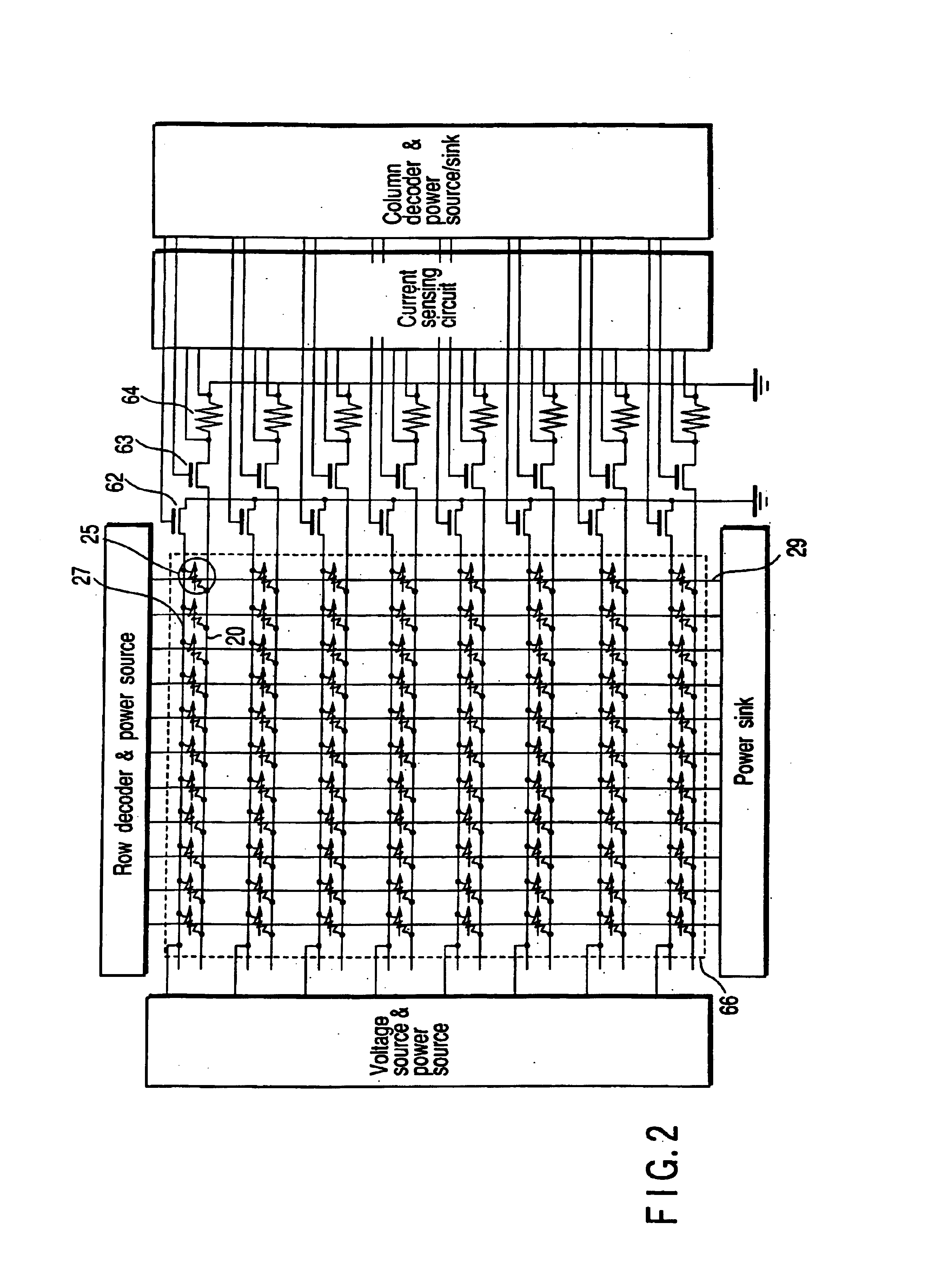Semiconductor memory device utilizing tunnel magneto resistive effects and method for manufacturing the same
a tunnel magneto resistive effect and memory device technology, applied in the field of magnetic random access memory (mram), can solve the problems of insufficient resistance r variation, inability to secure a sufficient mr ratio, and the accompanying memory utilizing this conventional tmr elemen
- Summary
- Abstract
- Description
- Claims
- Application Information
AI Technical Summary
Benefits of technology
Problems solved by technology
Method used
Image
Examples
first embodiment
FIG. 1 shows an equivalent circuit of the semiconductor memory device according to a first embodiment of this invention, and FIG. 2 shows a block diagram of the memory cell array wherein the equivalent circuit shown in FIG. 1 is arranged one after another in parallel with each other. Next, the structure of the equivalent circuit of the semiconductor memory device according to this invention will be explained.
As shown in FIG. 1, the equivalent circuit 60 of a semiconductor memory device according to a first embodiment is constituted by a plurality of tunneling magneto resistive effect element of TMR (Tunneling Magneto Resistive) type (hereinafter referred to as TMR element) 25 which are arranged parallel with each other, an upper data transfer line 27, a lower data transfer line 20, a constant-voltage generating circuit 61, a writing transistor 62, a reading transistor 63, a series resistor 64, and a sense circuit 65.
In this case, the upper data transfer line 27 is electrically conne...
second embodiment
This second embodiment is featured in that the gate electrode of MISFET (MOSFET) is substituted for the word line employed in the aforementioned first embodiment. Incidentally, the constituent components and the principle of operation are the same as those of the first embodiment, and therefore, the explanation thereof will be omitted, and only the features which differ from the first embodiment will be explained.
FIG. 15 shows a cross-sectional view illustrating the semiconductor memory device according to the second embodiment of this invention. As shown in FIG. 15, the semiconductor memory device according to the second embodiment employs, as a memory element, a plurality of TMR elements 25 each constituted by a first magnetic body 23, a second magnetic body 24, and an insulating layer 22 which is formed of a non-magnetic body and sandwiched between the first and second magnetic bodies 23 and 24. Further, a plurality of TMR elements 25 are arranged parallel with each other. The fi...
third embodiment
This second embodiment is featured in that the TMR elements of line-and-space configuration (linear) are formed on and along the lower data transfer line, and that the TMR elements are patterned in an island configuration by making use of a patterned upper data transfer line. Incidentally, the constituent components and the principle of operation are the same as those of the first embodiment, and therefore, the explanation thereof will be omitted, and only the features of manufacturing method which differ from the first embodiment will be explained.
FIG. 22 shows a cross-sectional view illustrating the semiconductor memory device according to the third embodiment of this invention. As shown in FIG. 22, the semiconductor memory device according to the third embodiment is the same in structure as that of the first embodiment, and therefore, the explanation thereof will be omitted.
FIGS. 23 to 29 respectively shows a cross-sectional view illustrating a manufacturing step of the semicondu...
PUM
| Property | Measurement | Unit |
|---|---|---|
| thickness | aaaaa | aaaaa |
| thickness | aaaaa | aaaaa |
| depth | aaaaa | aaaaa |
Abstract
Description
Claims
Application Information
 Login to View More
Login to View More - R&D
- Intellectual Property
- Life Sciences
- Materials
- Tech Scout
- Unparalleled Data Quality
- Higher Quality Content
- 60% Fewer Hallucinations
Browse by: Latest US Patents, China's latest patents, Technical Efficacy Thesaurus, Application Domain, Technology Topic, Popular Technical Reports.
© 2025 PatSnap. All rights reserved.Legal|Privacy policy|Modern Slavery Act Transparency Statement|Sitemap|About US| Contact US: help@patsnap.com



